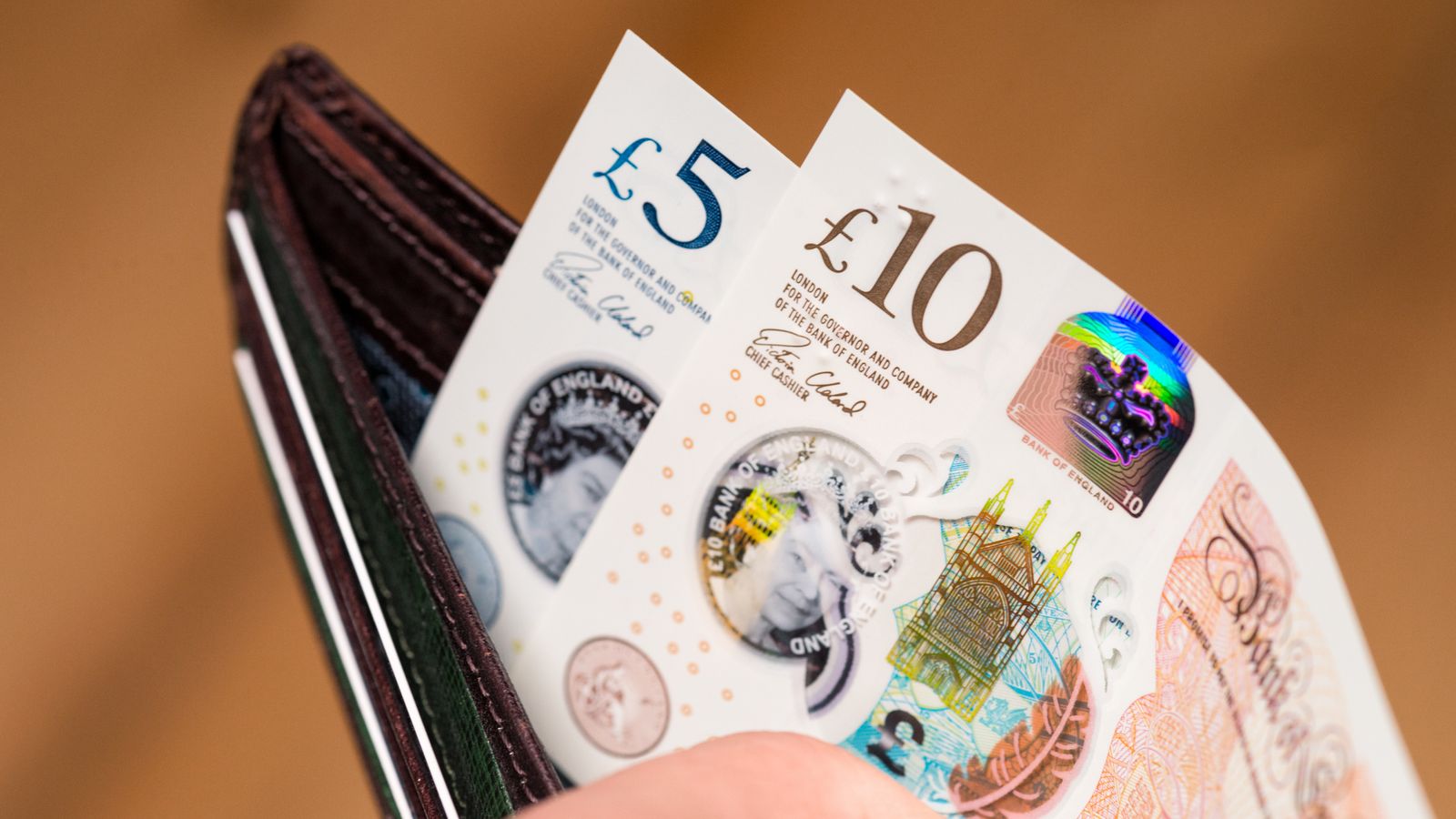Inflation rate remains at better than expected 4% as food prices fall for first time in two years


The rate of inflation has remained at 4% – despite forecasters predicting a rise, official figures show.
The consumer price index (CPI) measure of inflation stood at 4% in January, the Office for National Statistics (ONS) said.
Money latest: Inflation rate holds – as surprise US data leads to market sell-off
It’s the same as in December and below economists’ expectations, including the Bank of England.
The central bank had forecast 4.1%, while economists polled by Reuters were expecting an increase to 4.2%.
A rise in the energy price cap and the cost of second-hand cars contributed to inflationary pressure.
But the first month-on-month fall in food prices for more than two years helped CPI remain static.
The cost of food dropped 0.4% from December to January, with the overall rate of food inflation at 8%. Less than a year ago, in March, food inflation was at a 45-year high of 19.2%.
Spending calculator: See which prices have gone up or down
Advertisement
Also coming down in price was furniture and household goods, the ONS said.
It’s likely a positive sign for the Bank of England, which has been raising interest rates and making borrowing more expensive in an attempt to bring inflation down to the target rate of 2%.
Also remaining the same as last month, and below expectations, is a key figure looked at by the rate-setting members of the Bank’s Monetary Policy Committee: core inflation, which came in at 5.1%. It measures the rate prices are rising but excludes energy and food, which are prone to fluctuations.
Technology correspondent
Inflation may not have continued to fall in January, but the latest figures have raised hopes the Bank of England might be able to bring forward an interest rate cut and relieve some of the pressure on households and businesses.
At 4%, the consumer prices index was a fraction lower than predictions made by experts and the Bank of England.
It’s still double the central bank’s target, but avoiding a rise in inflation in January was an important landmark.
December’s rise in inflation was the first in 10 months and raised concern about the speed at which the cost of living crisis would ease.
After holding steady in January, the relative pace of price rises is expected to slow in the coming months when prices are compared to the high average levels of prices in the same months last year.
Most importantly, a relatively mild winter in Europe means stocks of gas have not been depleted by high demand for heating homes, and this is expected to bring down household bills by around 15% when Ofgem recalculates its energy price cap in April.
However, the concern of some rate-setters at the Bank of England is not so much about whether inflation is dropping but whether it will fall consistently and remain at low levels – and this remains to be seen.
There will be another inflation announcement – for February – before the committee meets and decides their next interest rate move in March.
Markets currently expect interest rates to be brought down to 5% in June and to 4.75% in September, falling further to 4.5% in December.
In response to the latest data, Chancellor Jeremy Hunt said: “Inflation never falls in a perfect straight line, but the plan is working; we have made huge progress in bringing inflation down from 11%, and the Bank of England forecast that it will fall to around 2% in a matter of months.”

